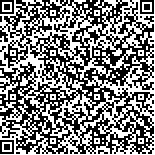下载中心
优秀审稿专家
优秀论文
相关链接
摘要

人工不透水层是城市地区的重要特征.作为城市生态环境的关键指数,不透水层百分比(Impervious Surfaces Percentage, ISP)常用于城市水文过程模拟、水质面源污染及城市专题制图等研究中.本文利用ERS-1/2 重复轨道雷达干涉数据,采用分类与回归树(CART)算法探究了雷达遥感在城市ISP估算中的可行性和潜力,并与SPOT5 HRG光学遥感图像的估算结果进行了分析比较.香港九龙港岛实验区的初步研究结果表明,雷达干涉数据在城市不透水层研究中具有一定的应用潜力,特别是裸土和稀疏植被的ISP估算结果要好于光学遥感,这主要得益于雷达干涉数据(特别是长时间相干图像)在人工建筑物和裸土或稀疏植被之间具有很强的区分能力,另外,雷达干涉数据和光学遥感数据间的融合能够提高ISP估算精度.
关键词:
城市不透水层 雷达遥感 ERS-1/2重复轨道干涉测量 分类与回归树 利用 雷达遥感 干涉数据 城市 透水层 百分比 估算精度 Surface Urban Data 融合 光学遥感数据 能力 人工建筑物 相干图像 长时间 稀疏植被 裸土 应用 实验区Impervious surfaces are usually defined as anthropogenic features through which water cannot infiltrate the soil,typically including buildings,roads,parking lots,sidewalks,and other built surfaces.Due to the close correlation with the spatial extent and intensity of urban development,impervious surface has been recently recognized as a key environmental indicator in assessing urban ecological condition and utilized to investigate urban hydrology,urban climate,land use planning and resource management.Over the past decades,extensive researches have been carried out to map impervious surfaces cost-effectively with satellite remote sensing data,especially multi-spectral optical images(e.g.Landsat TM/ETM and SPOT imagery).However,an accurate representation of impervious surface is still a challenge using these middle-resolution optical remote sensing data,because of the complexity of urban/suburban landscapes and the spectral confusions among different land-use/cover types(such as between barren land and parking lots).The spectral confusion as well as the presence of mixed pixel may result in an overestimation of impervious surface distribution in the less-developed areas,but underestimation in the well-developed areas.Unlike optical images that represent the spectral reflectivity of the targets illuminated by sun light,synthetic aperture radar(SAR) images are very sensitive to the surface roughness,shape,structure,dielectric properties of the illuminated ground objects and can provide information complementary to optical data.And recent advantages have shown that the use of SAR interferometric coherence products(e.g.coherence,ratio intensity and average intensity) can improve the capability to distinguish natural land covers and built-up objects in urban area.These SAR feature images generally are derived from SAR interferometry(InSAR) pairs acquired with relatively small perpendicular baseline and long interval.The main aim of this paper is to explore potentials of the use of InSAR data in mapping impervious surface cover.In this study,a CART-based approach is developed to quantify urban impervious surfaces as a continuous variable(impervious surface percentage,ISP) by using multi-source remote sensing datasets in which aerial photograph with high spatial resolution was used as training/test data of ISP estimation and medium-resolution imagery(e.g.InSAR feature images) to extrapolate imperviousness over large spatial areas.This approach produces a rule-based model for prediction of ISP based on training data,and can allow impervious surface cover to be mapped at sub-pixel level of medium remote sensing data.It involves the following steps:(1) development of training/test data using 33cm-resolution digital aerial CIR photography;(2) design of predictive variables,establishment and assessment of final regression tree modeling;(3) spatial extendibility of ISP prediction modeling with InSAR feature images,and(4) accuracy assessment of ISP mapping.A case study was conducted for impervious surface mapping in Hong Kong by using an ERS-2 InSAR pair acquired in year 1998,which was separated by a 35-day interval and had 13m perpendicular baseline component.Experiment results indicate that ERS-2 InSAR data is capable of mapping urban impervious surface cover with a reasonable accuracy.Average error of ISP estimation derived from ERS-2 InSAR data versus actual percent impervious surface is 18.2% with correlation coefficient 0.69.This estimation performance is comparable with the results obtained by using SPOT5 HRG multi-spectral imagery,which average error and correlation coefficient is 13.70% and 0.77,respectively.And the combination of InSAR data and SPOT5 HRG imagery can improve the performance of impervious surface percent estimation with average error 12.45% and correlation coefficient 0.80.

